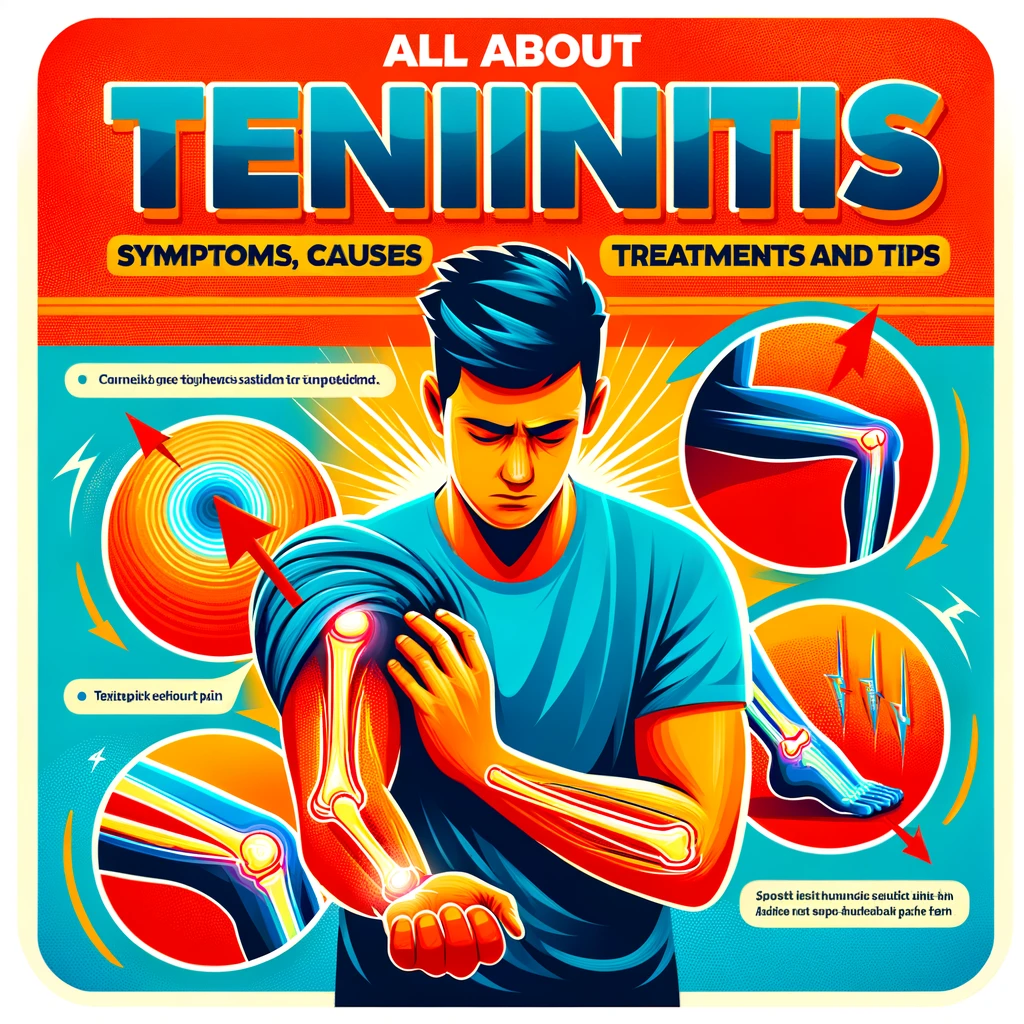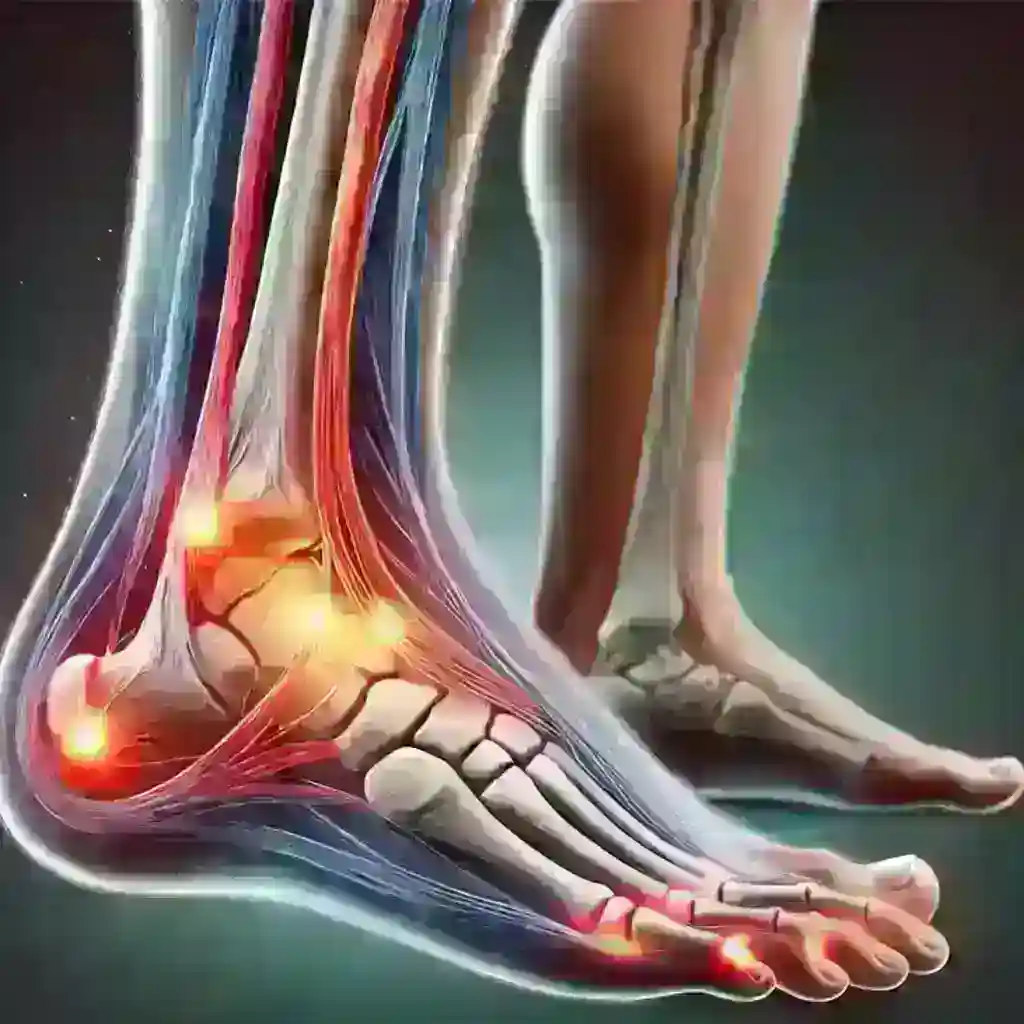
Table of Contents
Tendinitis can turn your everyday activities into painful challenges. But what exactly is tendinitis, and why should you care? Whether you’re dealing with it yourself or know someone who is, understanding tendinitis is key to managing it effectively.
Understanding Tendinitis
Definition of Tendinitis
Tendinitis is the inflammation of a tendon, the thick cord that attaches muscle to bone. Tendons are strong, but they can become irritated or inflamed from overuse or injury.
Anatomy of a Tendon
Tendons are like the body’s built-in cables, transmitting the force from your muscles to your bones to create movement. They are essential for any action, from lifting a fork to running a marathon.
Common Types of Tendinitis
- Rotator Cuff Tendinitis: Affects the shoulder, often seen in athletes and manual laborers.
- Achilles Tendinitis: Affects the tendon connecting the calf muscles to the heel, common in runners.
- Tennis Elbow: Affects the outer part of the elbow, common in racquet sport players.
- Golfer’s Elbow: Affects the inner part of the elbow, seen in golfers and those with repetitive wrist and finger movements.
Causes of Tendinitis
Repetitive Motion
Repetitive activities, whether at work or play, can cause tendons to become inflamed. Think of actions like typing, painting or playing a sport.
Age and Wear and Tear
As we age, tendons become less flexible and more prone to injury. The wear and tear over the years can lead to tendinitis.
Sudden Injury
A sudden, forceful injury can also cause tendinitis, resulting in immediate pain and inflammation.
Inflammatory Diseases
Conditions such as rheumatoid arthritis or gout can lead to tendinitis, as these diseases cause overall inflammation in the body.
Symptoms of Tendinitis
Pain and Tenderness
Pain is the most common symptom, often sharp and intense, especially when moving the affected area.
Swelling
Swelling around the tendon is typical, as the inflamed area fills with fluid.
Warmth and Redness
Warmth and redness over the affected area can indicate inflammation.
Limited Range of Motion
Movement can become restricted due to pain and swelling, making everyday activities difficult.
Diagnosing Tendinitis
Physical Examination
A doctor will typically start with a physical exam, checking for tenderness, swelling and range of motion.
Medical History
Discussing your symptoms, activities, and any previous injuries helps in pinpointing the cause of tendinitis.
Imaging Tests
X-rays, MRIs, or ultrasounds might be used to rule out other conditions and confirm tendinitis.
Treatment Options
Rest and Activity Modification
Resting the affected tendon and avoiding activities that worsen the symptoms is crucial. This might mean taking a break from sports or modifying work tasks.
Ice and Heat Therapy
Applying ice packs can reduce swelling and pain, while heat packs can help relax muscles and increase blood flow.
Medications
Over-the-counter anti-inflammatory drugs like ibuprofen can help manage pain and inflammation. In some cases, a doctor might prescribe stronger medications.
Physical Therapy
A physical therapist can teach you exercises to strengthen muscles around the tendon, improving flexibility and reducing the risk of recurrence.
Injections
Corticosteroid injections can provide quick relief by reducing inflammation. However, they’re not a long-term solution.
Surgery
In rare cases, when other treatments fail, surgery might be necessary to repair the damaged tendon.
Home Remedies for Tendinitis
R.I.C.E. Method
Rest, Ice, Compression, and Elevation (R.I.C.E) is a standard approach to managing minor injuries and can be effective for tendinitis as well.
Over-the-Counter Pain Relievers
Medications like acetaminophen or ibuprofen can help manage pain and reduce inflammation.
Gentle Exercises and Stretches
Stretching and gentle exercises can improve flexibility and strength, helping to prevent further flare-ups.
Using Proper Equipment and Techniques
Whether it’s the right shoes or ergonomic tools, using proper equipment can make a big difference in preventing tendinitis.
Preventing Tendinitis
Ergonomic Adjustments
Adjust your workspace to reduce strain on your tendons. This might mean changing the height of your chair or using a supportive cushion.
Regular Exercise
Regular exercise can help keep your tendons flexible and muscles strong, reducing the risk of tendinitis.
Warm-Up and Cool-Down Routines
Incorporating warm-up and cool-down routines into your exercise regimen can help prepare your tendons for activity and reduce the risk of injury.
Proper Technique and Equipment
Using the proper technique and equipment for sports and other activities can help prevent overuse injuries.
Lifestyle Tips for Managing Tendinitis
Balanced Diet
A diet rich in anti-inflammatory foods like fruits, vegetables and omega-3 fatty acids can help manage symptoms.
Adequate Hydration
Staying hydrated helps keep your tendons flexible and functioning properly.
Stress Management
Stress can exacerbate pain and inflammation, so finding ways to manage stress, like through meditation or yoga, can be beneficial.
When to See a Doctor
Persistent Symptoms
If symptoms persist despite home treatment, it’s time to see a doctor.
Severe Pain
Severe pain that limits your daily activities needs professional attention.
Signs of Infection
Redness, warmth, and fever along with tendinitis symptoms could indicate an infection, requiring prompt medical treatment.
Complications of Untreated Tendinitis
Chronic Pain
Ignoring tendinitis can lead to chronic pain, which can be debilitating.
Limited Mobility
Untreated tendinitis can cause lasting damage, leading to permanent loss of mobility in the affected tendon.
Tendon Rupture
In severe cases, an inflamed tendon can rupture, which is a serious injury that often requires surgery.
Living with Chronic Tendinitis
Coping Strategies
Learning to manage chronic tendinitis involves coping strategies like pacing your activities and knowing your limits.
Support Systems
Support from family, friends or a support group can be invaluable.
Long-Term Management
Long-term management might include regular physical therapy, ongoing medication and lifestyle adjustments.
Myths and Facts About Tendinitis
Common Misconceptions
One common myth is that tendinitis only affects athletes. In reality, it can affect anyone, especially those with repetitive use of certain tendons.
Evidence-Based Facts
Fact: Proper treatment and lifestyle changes can significantly improve symptoms and prevent recurrence.
Conclusion
Tendinitis, while painful and inconvenient, is manageable with the right knowledge and approach. By understanding its causes, symptoms, and treatment options, you can take proactive steps to treat and prevent it. Remember, listening to your body and seeking timely medical advice are key to overcoming tendinitis and maintaining a healthy, active lifestyle.
FAQs
What is the main cause of tendinitis?
Repetitive motion or sudden injury is the main cause of tendinitis.
Can tendinitis heal on its own?
Mild cases of tendinitis can resolve on their own with rest and proper care, but more severe cases may require medical treatment.
What foods should be avoided with tendinitis?
Foods that promote inflammation, such as sugary snacks, refined carbs and processed foods, should be limited.
Is tendinitis the same as arthritis?
No, tendinitis is the inflammation of tendons, while arthritis is the inflammation of the joints themselves.
How long does tendinitis last?
The duration of tendinitis can vary; it might last a few weeks to several months, depending on the cause and treatment.



Fantastic post! Really enjoyed reading it. Thanks for sharing!